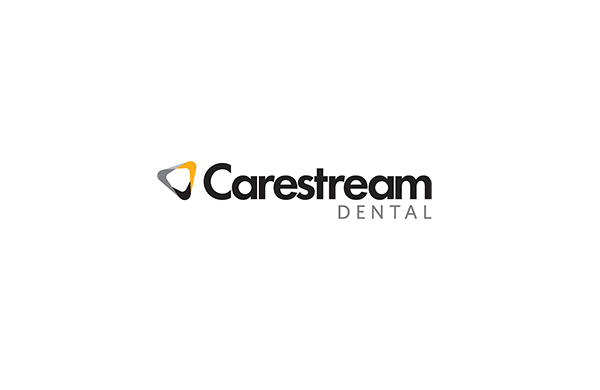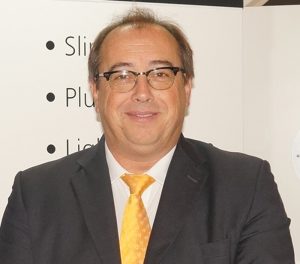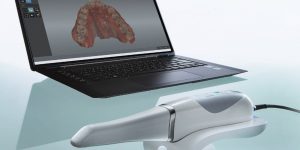Integrate innovation – David Claridge Carestream Dental
Featured Products Promotional FeaturesPosted by: Dental Design 27th November 2019

 Pursuing a thoroughly digitised workflow is a smart business decision that cuts down on waste, speeds up turnaround times and generally makes laboratories more attractive to potential clients. Many of the benefits speak for themselves, but one should also consider that there is also a generational shift occurring. Older clinicians used to working with traditional methods are gradually retiring, replaced with younger counterparts who have been raised with smart phones and tablets. For many young professionals if a digital alternative exists, and offers similar or better results, then switching to that is the obvious choice.
Pursuing a thoroughly digitised workflow is a smart business decision that cuts down on waste, speeds up turnaround times and generally makes laboratories more attractive to potential clients. Many of the benefits speak for themselves, but one should also consider that there is also a generational shift occurring. Older clinicians used to working with traditional methods are gradually retiring, replaced with younger counterparts who have been raised with smart phones and tablets. For many young professionals if a digital alternative exists, and offers similar or better results, then switching to that is the obvious choice.
Intraoral scanners
Optical impressions, taken with modern intraoral scanners offer excellent levels of accuracy alongside numerous improvements over traditional methods. This is an area where dental practices and laboratories alike can switch to a digital approach and reap the considerable benefits.
Ease of use. Intraoral scanners simplify taking impressions. Rather than taking physical impressions and having to cast them, a simple scan can be taken. Taking physical impressions can be messy and time consuming, and in complex cases it can be difficult to capture the necessary details. When working in physical media it is easy to make a mistake, and that can be time consuming to correct. With an optical impression, the learning curve to take excellent impressions is much reduced; the process is clean and quick, and where a mistake is made an instant do over is possible. The data captured can be directly imported into CAD/CAM software, eliminating the possibility of information being lost. It is also possible to digitise a plaster impression, but considering the benefits of moving to an all-digital workflow many will want to avoid such half-measures where possible.
More environmentally sound. Using physical impressions creates dental waste.[1] Eliminating waste wherever possible is both environmentally friendly and good business; it reduces direct material costs, as well as employee time spent on disposal.
Furthermore, simply sending physical impressions to a laboratory, necessitates burning fuel and the resulting pollution – and an excess of vehicles on the road results in more congestion, slower traffic and more emissions. Safely moving the impression requires packing materials, and in instances where the impression is damaged, the whole process must be repeated. Any given delivery has a small impact, but the cumulative result of countless physical impressions being sent does inevitably add up. With public concern rising over climate change, and legislation sure to follow – any business seeking to future proof themselves must endeavour to minimise their environmental impact as soon as possible.
More efficient. Cutting out physical impression taking and transportation saves considerable time. Digital impressions can be effortlessly sent to a laboratory in an instant. In a competitive and ever-changing market, businesses are under pressure to make themselves as lean and efficient as possible. Removing physical steps – with all the potential for errors and delays that the real-world poses, enables businesses to make considerable efficiency savings. Not only does this enable a much quicker turn around, it facilitates easy communication between dental practice and lab. It is now possible for a clinician to send a digital impression to a lab, where a dental technician can assess the impression and immediately let the clinician know if it is for any reason unsatisfactory. Where before another appointment would have had to be made, it is now possible to get this feedback before the patient has even left the practice.[2]
Compatibility
One of the few drawbacks of going digital is compatibility. Market fragmentation and proprietary software and hardware can create walled gardens where some things work seamlessly with each other while others do not. Systems where the digital file is in a proprietary format are referred to as closed systems, limiting you to that provider and perhaps a few partners. Thankfully, there are open standards and widely compatible formats available that are much less restricted in what they will work with. Making sure that what you opt for is broadly compatible helps keep your options open in the future, rather than being tied into a single provider. It also helps minimise hassle and avoid unnecessary costs when sharing files with other parties. When a practitioner and their chosen lab do not have compatible equipment, it can be an expensive proposition to share files.
The CS 3600 intraoral scanner from Carestream Dental offers superior full HD 3D scans that are quicker and clearer than ever before. The CS 3600 also boasts outstanding precision, and thanks to its open system architecture it is compatible with any CAD software that uses STL files.

Digitising your workflow can have a transformative effect on your laboratory, and its working relationships. Being able to offer greater efficiency, less waste and quicker turn around are great selling points, that can help differentiate your lab from less modern competitors. For clients that are still working with traditional methods, it can be well worth informing them of just how much a digital process can help.
For more information, contact Carestream Dental on 0800 169 9692 or
visit www.carestreamdental.co.uk
For the latest news and updates, follow us on Twitter @CarestreamDentl
and Facebook
[1] Haralur S., Al-Qahtani A., Al-Qarni M., Al-Homrany R., Aboalkhair A., Madalakote S. The dental solid waste management in different categories of dental laboratories in Abha city, Saudi Arabia. The Open Dentistry Journal. 2015; 9: 449-454. https://www.ncbi.nlm.nih.gov/pmc/articles/PMC4768654/ May 21, 2019.
[2] Managano F., Gandolfi A., Luongo G., Logozzo S. Intraoral scanners in dentistry: a review of the current literature. BMC Oral Health. 2017; 17: 149. https://www.ncbi.nlm.nih.gov/pmc/articles/PMC5727697/ May 21, 2019.








